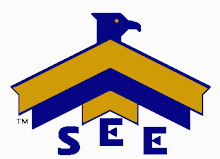Coaching is defined in many ways, terms and contexts. For our purpose, coaching is a stream of communication from the leader to team members for the purpose of maintaining and improving performance.
Often times, coaching is viewed as an athletic function and visions of Bobby Knight, Dean Smith, Tom Osborne or Lou Holtz are summoned. The model provided by the athletic version of coaching is not far off from the business model but there are some distinct differences.
One of the comments that has often been expressed about coaching is the lack of time to devote to this activity. This is a classic symptom of a leader being too involved in doing and not involved in leading. When debunked this comment is really more about a lack of comfort in coaching skills than it is about available time.
Team members who do not receive regular coaching often feel disengaged from the organization and leader. Morale will suffer and in the absence of good coaching, team members will take an active role in defining what is good and bad in the organization. Strong personalities, sometimes for very bad reasons, will rise to an unofficial position of importance and drive team effectiveness. Team members with no coaching will also become fearful, tentative and resentful of the lack of knowing where they stand.
When effective coaching is present, the opposite will occur. Team members are engaged, upbeat, clear in their direction and clear in their understanding of where there performance is at. Team members will develop a much clearer understanding of the organization’s needs and how they fit in the big picture with good coaching. They also will see hope in their own growth.
The core coaching competency is good communication skills. To coach you must be able to communicate. In groups, with individuals, following-up in writing; a leader must be able to express their comments, suggestions, praise and encouragement effectively.
The other core competency in coaching is the need to be a people person. Although this phrase is pretty grossly overused, you must enjoy interacting with team members to be an effective coach. The boss that hides in her office and buries her nose in projects and paper work is often expressing a discomfort with dealing with people and thus avoiding coaching activities.
The journey into effective and excellent coaching will begin with breaking coaching into three separate pieces. The first piece is feedback. Feedback is providing either positive or corrective information to team members about their performance or behavior. This is the most common form of coaching and should represent a big part of a leader’s coaching interactions.
The second tenet of coaching is teaching and mentoring. This is different from feedback in that it takes a more long-term and nurturing approach. Teaching and mentoring is about providing skills to be successful and growing people for maximum results.
The final piece of the coaching puzzle is a catch-all wing that includes decisions to release team members, game planning and protecting team members. For the purpose of simplicity, we will call this operational coaching.
No single part of coaching is more important than another and none are effective without the other. For team success, feedback is needed, mentoring and teaching are needed and the operational elements of coaching are certainly engaged. Equally important and equally distributed from a leadership perspective.
Subscribe to:
Post Comments (Atom)






No comments:
Post a Comment